
Santorini, officially Thira and classical Greek Thera, is an island in the southern Aegean Sea, about 200 km (120 mi) southeast from the Greek mainland. It is the largest island of a small circular archipelago, which bears the same name and is the remnant of a caldera. It forms the southernmost member of the Cyclades group of islands, with an area of approximately 73 km2 (28 sq mi) and a 2011 census population of 15,550. The municipality of Santorini includes the inhabited islands of Santorini and Therasia, as well as the uninhabited islands of Nea Kameni, Palaia Kameni, Aspronisi and Christiana. The total land area is 90.623 km2 (34.990 sq mi). Santorini is part of the Thira regional unit.

The Commandos, also known as the British Commandos, were formed during the Second World War in June 1940, following a request from Winston Churchill, for special forces that could carry out raids against German-occupied Europe. Initially drawn from within the British Army from soldiers who volunteered for the Special Service Brigade, the Commandos' ranks would eventually be filled by members of all branches of the British Armed Forces and a number of foreign volunteers from German-occupied countries. By the end of the war 25,000 men had passed through the Commando course at Achnacarry. This total includes not only the British volunteers, but volunteers from Greece, France, Belgium, Netherlands, Canada, Norway, Poland, and the United States Army Rangers and US Marine Corps Raiders, which were modelled on the Commandos.
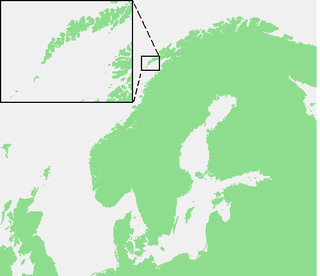
Operation Anklet was the codename given to a British Commando raid during the Second World War. The raid on the Lofoten Islands was carried out in December 1941, by 300 men from No. 12 Commando and the Norwegian Independent Company 1. The landing party was supported by 22 ships from three navies.
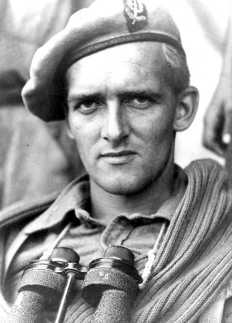
Anders Frederik Emil Victor Schau Lassen, VC, MC & Two Bars was a highly decorated Danish soldier, who was the only non-Commonwealth recipient of the British Victoria Cross in the Second World War. He was posthumously awarded the United Kingdom's highest gallantry award for his actions during Operation Roast on 8 April 1945 at Lake Comacchio in Italy in the final weeks of the Italian campaign.

The military history of Greece during World War II began on 28 October 1940, when the Italian Army invaded Greece from Albania, beginning the Greco-Italian War. The Greek Army temporarily halted the invasion and pushed the Italians back into Albania. The Greek successes forced Nazi Germany to intervene. The Germans invaded Greece and Yugoslavia on 6 April 1941, and overran both countries within a month, despite British aid to Greece in the form of an expeditionary corps. The conquest of Greece was completed in May with the capture of Crete from the air, although the Fallschirmjäger suffered such extensive casualties in this operation that the Oberkommando der Wehrmacht abandoned large-scale airborne operations for the remainder of the war. The German diversion of resources in the Balkans is also considered by some historians to have delayed the launch of the invasion of the Soviet Union by a critical month, which proved disastrous when the German Army failed to take Moscow.
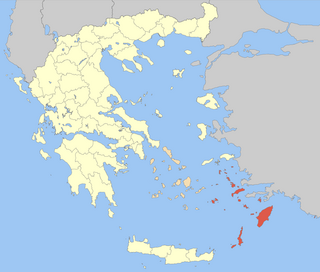
The Dodecanese campaign of World War II was an attempt by Allied forces to capture the Italian Dodecanese islands in the Aegean Sea following the Armistice with Italy in September 1943, and use them as bases against the German-controlled Balkans. Operating without air cover, the Allied effort was a costly failure, the whole of the Dodecanese falling to the Germans within two months. The Dodecanese campaign, lasting from 8 September to 22 November 1943, resulted in one of the last major German victories in the war.
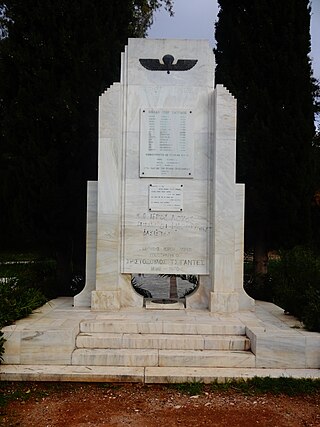
The Sacred Band or Sacred Squadron was a Greek special forces unit formed in 1942 in the Middle East, composed entirely of Greek officers and officer cadets under the command of Col. Christodoulos Tsigantes. It fought alongside the SAS in the Western Desert and the Aegean, as well as with General Leclerc's Free French Forces in Tunisia. It was disbanded in August 1945 but is the precursor to the modern Special Forces of the Hellenic Army.
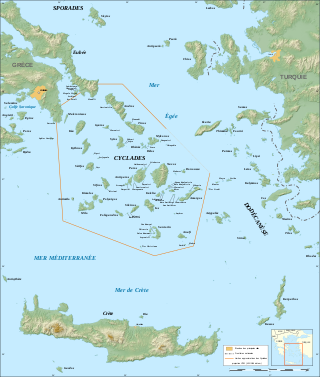
The Cyclades are Greek islands located in the southern part of the Aegean Sea. The archipelago contains some 2,200 islands, islets and rocks; just 33 islands are inhabited. For the ancients, they formed a circle around the sacred island of Delos, hence the name of the archipelago. The best-known are, from north to south and from east to west: Andros, Tinos, Mykonos, Naxos, Amorgos, Syros, Paros and Antiparos, Ios, Santorini, Anafi, Kea, Kythnos, Serifos, Sifnos, Folegandros and Sikinos, Milos and Kimolos; to these can be added the little Cyclades: Irakleia, Schoinoussa, Koufonisi, Keros and Donoussa, as well as Makronisos between Kea and Attica, Gyaros, which lies before Andros, and Polyaigos to the east of Kimolos and Thirassia, before Santorini. At times they were also called by the generic name of Archipelago.

Operation Abstention was a code name given to a British invasion of the Italian island of Kastelorizo (Castellorizo) off the Turkish Aegean coast, during the Second World War, in late February 1941. The goal was to establish a motor torpedo-boat base to challenge Italian naval and air supremacy on the Greek Dodecanese islands. The British landings were challenged by Italian land, air and naval forces, which forced the British troops to re-embark amidst some confusion and led to recriminations between the British commanders for underestimating the Italians.

The 1st Special Service Brigade was a commando brigade of the British Army. Formed during the Second World War, it consisted of elements of the British Army and the Royal Marines. The brigade's component units saw action individually in Norway and the Dieppe Raid, before being combined under one commander for service in Normandy during Operation Overlord. On 6 December 1944, the Brigade was redesignated 1st Commando Brigade, removing the title Special Service and its association with the German SS.

Operation Albumen was the name given to British Commando raids in June 1942 on German airfields in the Axis-occupied Greek island of Crete, to prevent them from being used in support of the Afrika Korps in the Western Desert Campaign in the Second World War. These operations were carried out in tandem with similar raids against Axis airfields at Benghazi, Derna and Barce in Libya and were among the first planned sabotage acts in occupied Europe.

The Damasta sabotage was an attack by Cretan resistance fighters led by British Special Operations Executive officer Captain Bill Stanley Moss MC against German occupation forces in World War II. The attack occurred on 8 August 1944 near the village of Damasta and was aimed to prevent the Germans from assaulting the village of Anogeia.
Operation Dryad was a raid on the Casquets lighthouse in the Channel Islands by British Commandos during World War II. The Commandos captured the lighthouse and its occupants and departed leaving no trace that anyone had ever been there.

The Viannos massacres were a mass extermination campaign launched by German forces against the civilian residents of around 20 villages located in the areas of east Viannos and west Ierapetra provinces on the Greek island of Crete during World War II. The killings, with a death toll in excess of 500, were carried out on 14–16 September 1943 by Wehrmacht units. They were accompanied by the burning of most villages, looting, and the destruction of harvests.
The Holocaust of Kedros, also known as the Holocaust of Amari, was the mass murder of the civilian residents of nine villages located in the Amari Valley on the Greek island of Crete during its occupation by the Axis powers in World War II. The massacre was a reprisal operation mounted by Nazi German forces.

The Levant Schooner Flotilla was an Allied naval organisation during World War II that facilitated covert and irregular military operations in the Aegean Sea from 1942–1945. It was primarily organised by the British Royal Navy and consisted of a series of commandeered caïques, or local schooners, manned by British sailors, special forces, and Greek volunteers.

The Raid on Symi also known as Operation Tenement took place from 13 to 15 July 1944 as part of the Mediterranean Campaign in World War II. The action was a combined operation conducted by two Allied special forces, the British Special Boat Service and the Greek Sacred Band, who raided the German and Italian garrisons at the island of Symi in the Aegean Sea.

Adrian Charles Cuthbert Seligman, DSC was a British sailor, writer, and soldier in the Second World War. Seligman would create the Levant Schooner Flotilla naval commando unit in the Aegean Sea.
Kimonas or Kimon Zografakis, frequently referred to by his nom de guerre, Black Man, was a distinguished Greek partisan in the Cretan resistance from 1941 to 1944 against the Axis occupation forces.
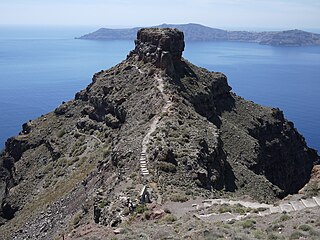
Skaros, also known as Skaros Rock, Fortress Skaros or Castle Skaros, is a rock formation and collection of ruins on the Greek island of Santorini.

















